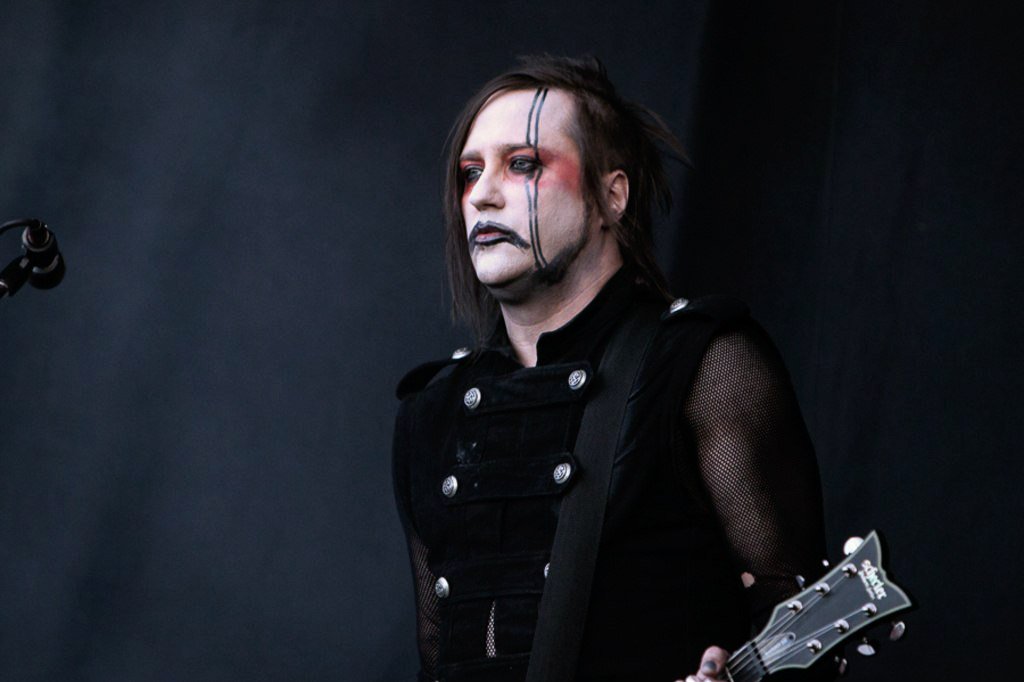
Roll over Freddy and tell Michael Myers the news: there’s a new slasher icon in town named Art the Clown.

Art became a horror villain A-lister last Halloween with the smash-hit killfest Terrifier 2, which also propelled the micro-budgeted original Terrifier — relegated to a streaming-only release — back into the public consciousness. The first film, originally released in 2018, will make its theatrical debut in a nationwide re-release starting July 19.
While there’s no shortage of nightmare-inducing horror baddies, the best are made all the more frightening with a soundtrack that highlights the ghastliness of their deeds. And the creepy, discordant themes that run through both Terrifier films make the misdeeds of Art that much harder to shake.
The Current chatted on Zoom with film composer Paul Wiley, 50, who checked in from his home in LA. In between tours as a guitarist for Marilyn Manson, Wiley has scored other indie films, though the Terrifier series has been his most recognizable work.
The popularity of Terrifier could be seen as a reaction to the “elevated horror” of studios like A24. It isn’t an intellectual exercise or art film, but wall-to-wall blood and guts.
But there’s no question that Wiley’s music is a key component of the film. Need evidence? Watch the director’s commentary for either movie on the Blu-ray releases and you’ll see both are significantly less scary and intense without sound.
What makes the music so scary?
“There’s a lot of dissonance in it,” Wiley said. “Especially with some of the strings. I tried to put some things that were felt more than heard.”
Wiley also noted that because Art doesn’t speak, the music become his voice.
“I want the sounds and the soundscapes to evoke him,” he added.
Avoiding the ’80s
But the music doesn’t just play well onscreen. It can set a certain mood divorced from the visuals, and which may explain why the vinyl editions of the two soundtracks have become hot commodities. Just don’t say it’s because of synthwave — the dark ’80s-evocative sound that’s emerged as a hot commodity thanks to its use in the Netflix smash Stranger Things.
“I tried to avoid the ’80s synth sounds,” said Wiley, explaining what makes his score different from synthwave. “People link the original [Terrifier] score with [synthwave], but I don’t hear that much of it in what I did. That’s more [vintage equipment like] Rolands and JUNOs with a lot of melody. With my work, if it was ever a melodic or motif piece, it was usually the theme with stuff on top of it.”
Several years before composing the music for the Terrifier series, Wiley decided to devote himself to scoring films full-time with a move to LA. It proved to be a challenging environment full of failed musicians with the same aim.
Even so the move felt natural. Wiley said he was way more into horror films than rock bands as a youngster.
As such things go, it wasn’t long until an offer he couldn’t refuse materialized from shock rock legend Marilyn Manson, who needed a guitar player immediately.
“I got the call, a couple of rehearsals, then straight to Russia,” Wiley said.
Composing on tour
Wiley stayed with the soundtrack work even while touring with Manson, focusing primarily on shorts. He carried a portable rig so he could compose on his downtime.
Eventually, Wiley got the Terrifier call from director Damien Leone, and he began working on the first film’s soundtrack while on a South American tour with Manson.
“I said I’d do it. But when everyone else was having fun, I’d spend a couple days in a hotel room trying to hammer out a theme.”
During a two-week break from the road, he managed to put the finishing touches on the score.
Leone was happy with Wiley’s work — as were audiences — and he got the call back for the sequel.
Wiley may have picked up a thing or two about shocking audiences from Manson. And, in the end, it’s audiences that make films like Terrifier and its sequel work.
“I saw [Terrifier 2] with like 20 of my friends when it played,” he said. “You can participate with other people. It’s kind of like the Rocky Horror Picture Show of horror. People sitting in front of me were high-fiving on the kills. People go collectively. It was a lot of groups cheering and laughing.”
He added: “I don’t think people have had that in a while. The older generation that grew up with slasher films have missed that. I remember going to see Friday the 13th in 3D three times in the theater.”
Leave a Reply